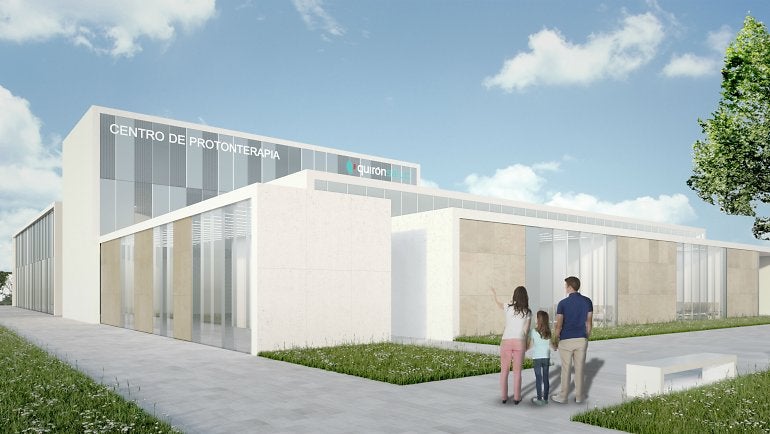
Cancer remains one of the greatest challenges facing healthcare systems worldwide. One in every six people dies of this disease, making it the world’s second leading cause of death.
(Published: July 2018)
Yet one of the most modern weapons in the battle against cancer is almost inconceivably tiny, measuring less than one millionth of a millionth of a millimeter across: the proton. In 2020, Quirónsalud, the Spanish hospital group of Fresenius Helios, is planning to open Spain’s first proton beam therapy center.
One of the most advanced cancer treatments, proton beam therapy works by radiating the tumor with positively charged hydrogen atoms, and has major advantages over traditional radiation therapy: The proton beam is narrower, and can be more precisely targeted, which reduces or even eliminates radiation exposure to the surrounding, healthy tissue. As a result, a significantly higher dose can be targeted directly at the tumor, even as the overall amount of radiation used – and the accompanying side effects – are reduced. This makes proton beam therapy especially beneficial for children.
Proton beam therapy has major advantages over traditional radiation therapy.

The secret is in the nature of the proton itself. X-ray radiation, the most commonly used form of radiation therapy, permeates the entire body and its energy decreases exponentially. The initial dose, therefore, must be especially high in order to ensure it still has enough strength to destroy cancer cells when it reaches the tumor. On the way there, and after, it can damage healthy tissue. But because protons only release energy at the end of their trajectories, their impact can be directed to the millimeter.
There are currently only about 20 proton beam therapy centers in Europe, including in Germany, France and Italy. The new Quirónsalud proton beam therapy center, which was built in Madrid, has required an investment of about €40 million.
Quirónsalud has opted for the Proteus One, a unique proton beam therapy system which, unlike others systems, allows all the technology necessary for treatment to be grouped together in one multifunctional room. It includes a tumor-scanning system to help doctors determine the optimal dose for each part of the body being treated, as well as a state-of-the-art imaging systems. And Proteus One can rotate 360 degrees, to direct the beam from any desired angle.
“The investment in building a proton beam therapy center shows how we are continuously seeking better treatment options for our patients,” said Dr. Leticia Moral, General Director for Assistance and Quality at Quirónsalud. “This new equipment and technology will not only enable us to treat cancer patients very effectively and with minimal side effects, but will aid us in researching new types of treatment.”



